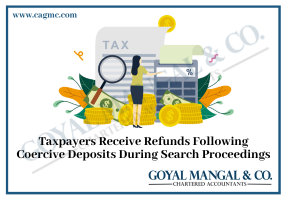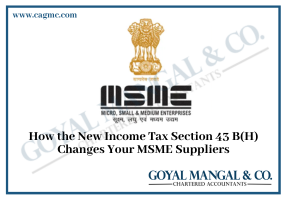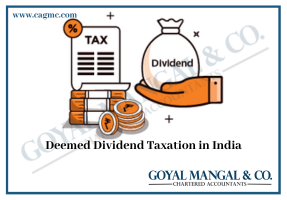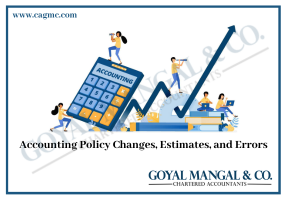
Individual taxpayers have become concerned about the transition from the old tax regime to the new one, as the taxation landscape is constantly changing. So, it seems that we have moved from an old tax regime to a new tax regime. The point is that although the new option could offer reduced rates, you could potentially miss out on certain deductions and exemptions. Choosing between the old and new tax regimes depends on your own personal and business factors. In this article, we’ll break down both options to help you decide which one is the right fit for you.
Differences in Old and New Tax Regime
Below is the difference between the old and new tax regimes:
- Tax Rate Structure: The tax rate structure of the old tax regime was a bit complicated, with various numbers of exemptions and slabs, whereas in the new tax system, there are very few exemptions available.
- Deductions and Exemptions: The old tax regime provided various deductions to the individual as well as exemptions such as LTA., HRA, and 80C deductions, whereas the new tax regime offers fewer benefits and deductions, primarily the standard deduction, vacation benefits, and limited tax savings opportunities.
- Tax planning feasibility: Under the old tax system, there is very limited feasibility to change the deductions and investments in a particular year, whereas, in the case of the new tax regime, there is not much feasibility for changes in the mid-year as compared to the old tax regime.
- Tax Liability Calculation: In the old tax regime, Complex allowances and deductions are required when calculating taxes, while in the new tax regime, Simple tax calculations with reduced tax rates and limited benefits.
- Rebate Limit: In the case of the old tax regime, the rebate limit is up to Rs 2.5 lakh, while in the new tax regime, the increased tax benefit limit is up to Rs 7 lakh for certain income groups.
- Surcharge for high earners: higher surcharge rates for those earning more than ₹5 crore in the case of the old tax regime, while in the case of the new tax regime, the surcharge rate has been reduced for ultra-rich people with incomes above ₹5 crore.
- Investment option: The old tax regime Promotes investments in tax-saving instruments like PPF, NPS, and ELSS. While the new tax regime offers limited opportunities for long-term wealth creation and tax savings through investments,.
- Opt-in and opt-out flexibility: In the case of the old tax regime, you can choose between the old or the new mode every year. In the case of the new tax regime, there is limited flexibility to switch between modes, particularly for non-salary taxpayers.
New Tax Regime Meaning
Budget 2020 introduced a new tax system that changes tax rates and provides reduced tax rates to taxpayers. However, this new system had limited appeal as it restricted several exemptions and deductions, including HRA, LTA, 80C, 80D, etc. In the 2023 budget, the government announced its five key changes. All these are aimed at making the new tax system more attractive and taxpayer-friendly. Increase in tax refund limit:
- The government has increased the full tax refund limit to ₹ 7 Lakhs.
- This is a welcome improvement over the previous Rs 500,000 under the old tax regime.
- This means that under the new tax system, people with incomes up to Rs 700,000 will not have to pay any tax at all.
- The tax exemption limit has been increased to Rs 300,000
Tax Rates Under New Tax Regime
The new tax regime slabs are:
| Net Annual Income Range | New Tax Regime Rate |
| Rs. 0–3 Lakhs | Nil |
| Rs. 3–6 Lakhs | 5% |
| Rs 6–9 Lakhs | 10% |
| Rs 9–12 Lakhs | 15% |
| Rs 12–15 Lakhs | 20% |
| Above Rs 15 Lakh | 30% |
Additionally, people earning up to INR 7 Lakh per year are eligible for the rebate A notable change in the new tax system is the reduction in the highest surcharge rate for the super-rich. For those earning more than INR 5 crore, there will now be a surcharge of 25%, up from 37% previously.
Old Tax Regime
The tax system that existed before the introduction of the new system is called the old tax system. This previous system included around 70 exemptions and deductions, such as HRA and LTA, which can effectively reduce your taxable income, resulting in a lower tax liability. Among these deductions, Section 80C stands out as the most prominent and influential, offering taxpayers the opportunity to reduce their taxable income by up to Rs. 1.5 lakh. In addition, taxpayers have the opportunity to choose between the old and new tax systems.
Tax Rates under the old tax Regime
The Old Tax Regime slabs are:
| Net Annual Income | Old Tax Regime rate |
| Up to Rs. 2.5 Lakh | Nil |
| Rs. 2.5 to 5 Lakh | |
| Rs 5 to 10 Lakhs | 20% |
| Above 10 Lakhs | 30% |
Old Tax Regime VS New Tax Regime – Which one is better?
Advantages of the old tax regime under GST
- Simplicity for Small Businesses: The old tax regime under GST is considered simpler for small businesses. It involves less compliance and is easier to understand, making it more accessible for small business owners who may find the new regime complex.
- Lower Compliance Burden: Businesses often appreciate the reduced compliance burden of the old tax regime. It involves less paperwork and is generally less time-consuming, allowing businesses to focus more on their operations.
- Transition Ease: Some businesses may find it easier to transition to the old tax regime as they were accustomed to the previous tax system. This can result in a smoother adaptation process without the need for extensive relearning.
- Clarity in Tax Structure: The old tax regime provides a clearer understanding of the tax structure for businesses. This clarity can be advantageous, especially for those who may find the new regime’s multiple tax slabs and classifications confusing.
- Stability and Predictability: The familiarity of the old tax regime provides a sense of stability and predictability for businesses. They can plan their finances more confidently, knowing the established rules and procedures.
- Avoidance of IT Challenges: Some businesses, especially smaller ones, may face challenges in adopting and managing the required information technology (IT) infrastructure for the new tax regime. The old regime avoided these technological hurdles.
- Reduced Training Costs: Training employees on the intricacies of a new tax regime can be costly and time-consuming. The old regime requires less training, reducing associated costs for businesses.
- Minimal Disruptions: Sticking to the old tax regime minimizes disruptions in the day-to-day operations of businesses. Familiarity with existing processes allows for a more seamless continuation of business activities.
- Customary Business Practices: Businesses that have established their processes based on the old tax regime may find it more convenient to continue with those customary practices, avoiding the need for extensive restructuring.
- Easier for Certain Industries: Some industries may find the old tax regime more tailored to their specific needs. Adherence to this regime might be a simpler and more effective solution for businesses in those particular sectors.
Advantages of New Tax Regime
- Reduced Tax Cascading: The new tax regime under GST aims to eliminate the cascading effect of taxes. This means that businesses only pay taxes on the value they add to a product or service, preventing the taxation of taxes.
- Promotion of Digital Transactions: The new regime encourages digital transactions and compliance through the use of technology. This not only streamlines processes but also contributes to a more transparent and efficient tax system.
- Simplified Compliance: The new tax regime aims to simplify compliance procedures. With online filing and a unified system, businesses can fulfil their tax obligations more efficiently, reducing paperwork and manual efforts.
- Competitive Advantage for Businesses: Businesses operating under the new regime can potentially gain a competitive advantage. The streamlined tax structure and input tax credit provisions can lead to cost savings, making products and services more competitive in the market.
- Global Integration: The new tax regime aligns with international practices, making it easier for businesses to integrate into the global market. This can attract foreign investments and contribute to the overall economic growth of the country.
Disadvantages of the Old Tax Regime
- Complexity for Some Businesses: The old tax regime can be complex, especially for small businesses. Understanding and adhering to various tax rules and filing requirements may pose a challenge for those without specialized expertise.
- Limited Input Tax Credit: Businesses often faced limitations in claiming Input Tax Credit (ITC) under the old regime. This could lead to increased tax costs and reduced competitiveness.
- Potential for Tax Cascading: Tax dropping, where taxes are levied on top of already taxed components, was a risk in the old system. This could inflate prices and make products and services more expensive for consumers.
- Varied State Tax Structures: The existence of different tax structures in various states created inconsistencies and complexities for businesses operating across state borders. This lack of uniformity added to the administrative burden.
- Limited Transparency: The old tax system lacked the transparency provided by the GST. This could lead to misunderstandings and disputes between businesses and tax authorities.
Disadvantages of the New Tax Regime (GST)
- Initial Implementation Challenges: The introduction of GST faced initial implementation challenges, causing disruptions for businesses. Adapting to the new system required adjustments, leading to temporary difficulties.
- Technology Dependency: The GST system relies heavily on technology for compliance. This can be a disadvantage for businesses, especially smaller ones, that may struggle with the required digital infrastructure.
- Multiple Tax Slabs: The existence of multiple tax slabs in the GST system can be confusing. Businesses may find it challenging to navigate and correctly apply the different rates for various goods and services.
- Compliance Burden for Small Businesses: While GST aims to simplify compliance, smaller businesses may still find it burdensome due to the need for regular filings and adherence to the new procedures.
- Transition Period Uncertainty: The transition from the old regime to GST introduced a period of uncertainty for businesses. Adjusting to the new processes and understanding the changed dynamics required time and effort.
- Complexity in Reverse Charge Mechanism: The reverse charge mechanism in GST, where the recipient is liable for paying the tax, can be complex. Businesses may find it challenging to manage and comply with this provision.
- Impact on the Service Sector: The service sector, in particular, experienced changes in tax rates under GST. This could affect pricing strategies and profitability for service-oriented businesses.
- Potential for Increased Compliance Costs: Some businesses may incur higher compliance costs under the new regime, especially if they need to invest in technology, training, and other resources to meet the GST requirements.
- Less Deductions: The deductions in income tax new tax slabs are very low as compared to income tax old rate slabs.
- Complex decision-making: Choosing between the old and new tax systems can be challenging, as taxpayers need to evaluate which system is more beneficial based on their specific financial situations, making tax planning more complex.
- Loss of HRA and Other Allowances: Taxpayers opting for the new system lose the ability to claim House Rent Allowance (HRA) and certain other exemptions, impacting those who rely on these benefits.
- Ineligibility for NPS Benefits: Employees contributing to the National Pension System (NPS) may find the new system less favorable, as they lose out on additional deductions available in the old system.
- No Rebates and Exemptions: Rebates under Section 87A and exemptions for long-term capital gains (LTCG) under Section 10(38) are not applicable in the new tax system, affecting those who previously enjoyed these benefits.
- Impact on Business Owners: Business owners and professionals may face complexities in tax planning due to the removal of deductions like business-related expenses, potentially leading to higher tax liabilities.
Conclusion
In conclusion, the choice between the old and new tax regimes is a decision that depends on individual circumstances. While the new regime offers simplicity and potentially lower rates, the trade-offs in terms of deductions and exemptions must be carefully considered. Ultimately, taxpayers must weigh their unique financial profiles to determine which regime aligns better with their goals and priorities. The tax landscape may have evolved, but the path to optimal financial planning remains a personalized journey.







